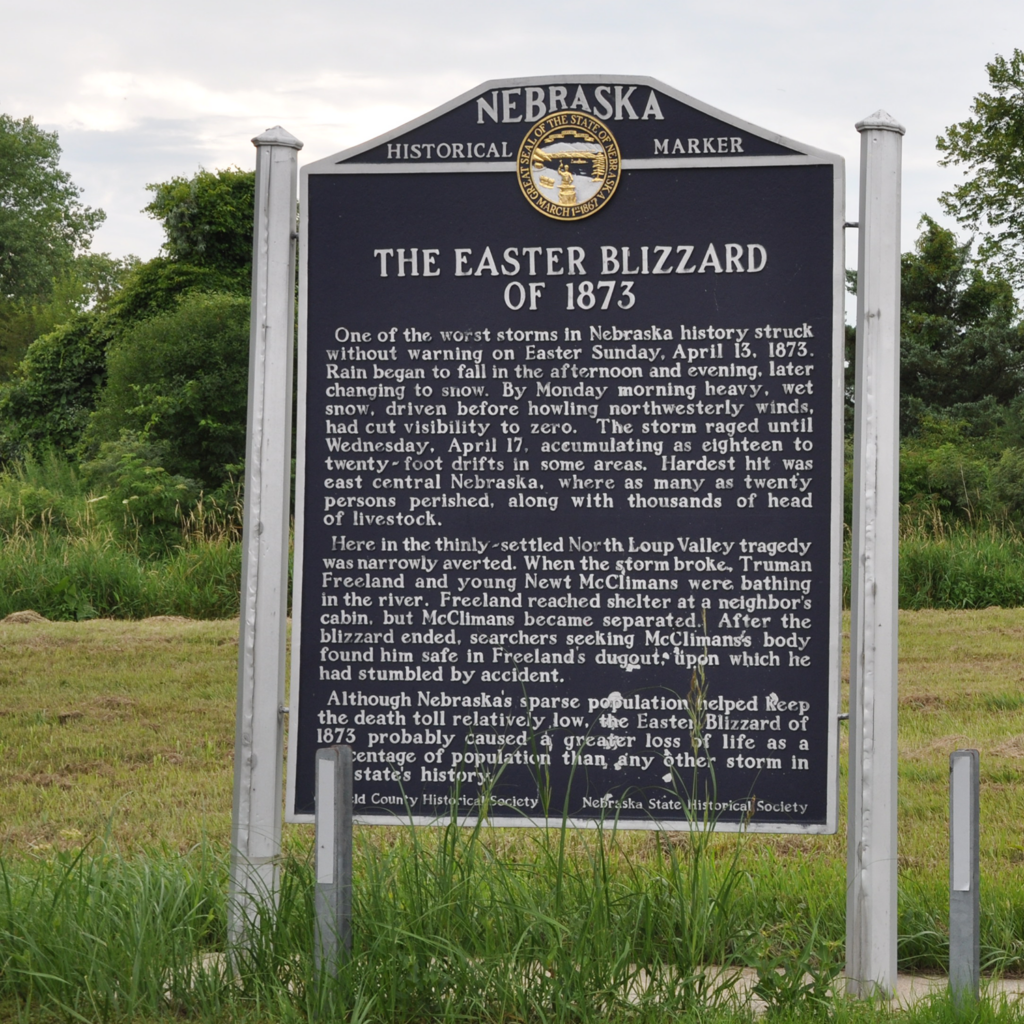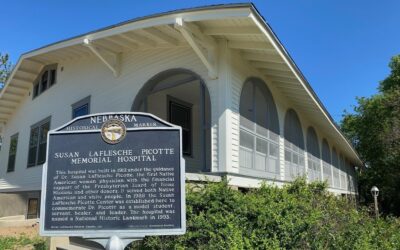Our Historical Markers across Nebraska highlight fascinating moments, places, and people in our state’s past. Today we’re focusing on a marker that tells the story of one of the worst storms in Nebraska history, which struck on this day in 1873.

Marker Text
One of the worst storms in Nebraska history struck without warning on Easter Sunday, April 13, 1873. Rain began to fall in the afternoon and evening, later changing to snow. By Monday morning heavy, wet snow, driven before howling northwesterly winds, had cut visibility to zero. The storm raged until Wednesday, April 17, accumulating as eighteen to twenty-foot drifts in some areas. Hardest hit was east central Nebraska, where as many as twenty persons perished, along with thousands of head of livestock.
Here in the thinly-settled North Loup Valley tragedy was narrowly averted. When the storm broke, Truman Freeland and young Newt McClimans were bathing in the river. Freeland reached shelter at a neighbor’s cabin, but McClimans became separated. After the blizzard ended, searchers seeking McClimans’s body found him safe in Freeland’s dugout, upon which he had stumbled by accident.
Although Nebraska’s sparse population helped keep the death toll relatively low, the Easter Blizzard of 1873 probably caused a greater loss of life as a percentage of population than any other storm in the state’s history.
Marker Location
Ladybird Lake, one and one-fourth miles east of Burwell on Highways 91 and 11, Garfield County, Nebraska.



